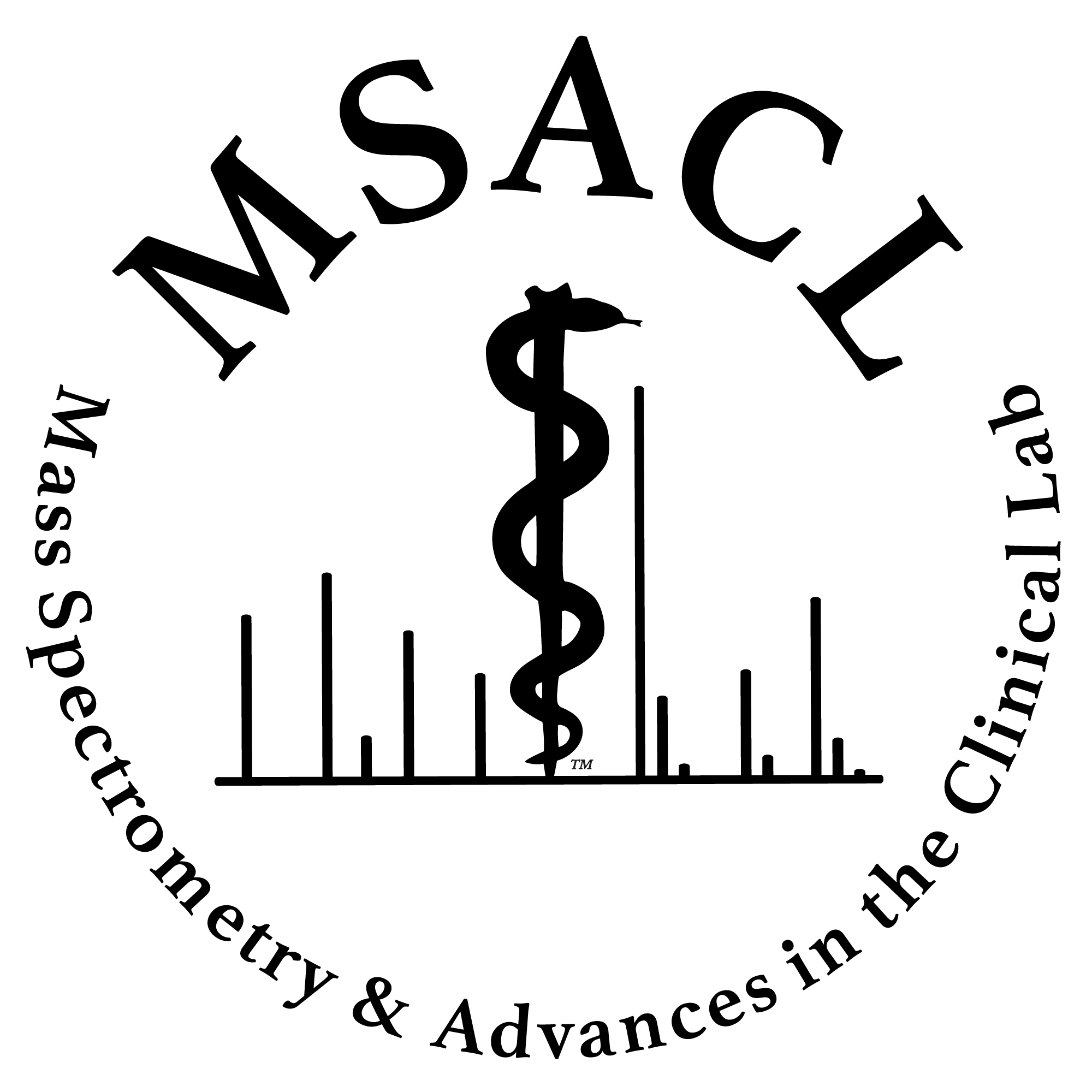|
Abstract Background: Vedolizumab (VEDO) is a humanized IgG1 kappa therapeutic monoclonal antibody (tmAb) targeting the α4β7 heterodimer, expressed on the surface of gut-specific lymphocytes. This tmAb is routinely used to treat inflammatory bowel disease (e.g. ulcerative colitis and Crohn’s disease). Patients with higher trough concentrations have improved outcomes, so therapeutic drug monitoring (TDM) has become standard of care. Our laboratory has pioneered the use of mass spectrometry for tmAbs. The clinical laboratory developed test (LDT) to quantitate VEDO was the first method clinically available with IgG immuno-enrichment and analysis of the tmAb light chain intact mass, without the use of tryptic peptides or an available stable isotopically labeled (SIL) internal standard (IS). Occasionally, the method has issues with interfering peaks or poor peak shape in a subset of extracted ion chromatograms (XICs) making quantitation more subjective in base line drawing of an XIC or result being unable to be released. Multiple experiments to mitigate this included: changes to mobile phases, columns, enrichment techniques, internal standard, and different instrumentation, all with limited success. Here we set out to investigate whether a specific anti-VEDO antibody enrichment would eliminate the XIC interferences.
Methods:
Samples: 23 residual serum samples with a physician ordered VEDO test which required troubleshooting due to XIC peaks with shoulders, split peaks, or unacceptable retention time (RT) shift were available for this study. Routine LDT method utilizes a surrogate protein IS with Melon Gel enrichment. Samples are reduced with DTT and then analyzed using a Thermo Fisher/Cohesive TLX4 Transcend multi-plex HPLC system connected to a Thermo Scientific Q-Exactive Plus Orbitrap mass spectrometer using Tracefinder for quantitation. The quality of XIC and final report were compared both visually and quantitatively, to the method in development described below. Proof of concept was considered successful if it removed at least 75% of the interferences observed.
Antibody coupling: Approximately 20mg Dynabeads M-280 Tosylactivated (ThermoFisher Scientific) were added to LoBind tubes and placed in a magnetic holder. Beads were washed with 1.5mL borate buffer for 1 minute in an Eppendorf ThermoMixer at room temperature (RT) at 1500RPM. Coupling mixture consisted of 500mcL borate buffer, 100mcg VEDO bridging antibody (Bio-Rad HCA293 or HCA294) and 500mcL ammonium sulfate; mixed overnight for 16-18 hours at 37°C and 1500RPM. The beads were washed with 1.5mL 1xPBS + 5mg/mL BSA for 1 hour at RT and 1500RPM. The beads were washed three times with 1mL of 1xPBS + 0.1% Tween. The beads were resuspended in 500mcL 1xPBS + 0.1% Tween to give a final concentration of 200mcg/mL coupled antibody.
Sample enrichment: Samples were prepared by adding 30mcL unknown/standard/QC to a LoBind tube with 25mcL bead slurry, 50mcL 1xPBS, and 30mcL of 25mcg/mL SIL-VEDO (Sigma-Aldrich). Samples were mixed at RT for two hours at 1500RPM. The beads were washed twice with 1xPBS and twice with water. Elution was done with 50mcL 5% acetic acid and mixing at RT for 10 minutes at 1500RPM. The eluent was then transferred to a PCR plate and reduced with 25mcL 100mM DTT in 1M ammonium bicarbonate. The plate was mixed at 56°C for 45 minutes at 800RPM.
LC-MS: The reduced samples were analyzed using an Agilent 1260 infinity II LC connected to an AB Sciex ZenoTOF 7600 mass spectrometer. A volume of 20mcL was injected onto an Agilent Poroshell 300SB C3, 2.1x75mm, 5 micron column heated at 60°C, running an 8-minute gradient from 25 to 34%B at a flow rate of 300mcL/min. Mobile phases consisted of 1% formic acid in water (A) and 90% acetonitrile, 10% isopropyl alcohol, and 0.1% formic acid (B). Sciex OS was used for data analysis. The +11, +12, and +13 charge states of the VEDO light chain were combined to give an XIC. A calibration curve from 2 to 125mcg/mL was obtained from standards prepared by spiking VEDO in normal human serum.
Results: Changes to mobile phases, columns, enrichment, and instrumentation gave limited success. Substituting the SIL-VEDO IS into the current clinical Melon Gel method eliminated the interference (peak splitting and shoulders) in the IS XICs seen in 4 of the 23 residuals from the clinical method. The SIL-VEDO also enhanced analyte peak confirmation without using any extra macros to calculate RT differences as is needed currently with the surrogate IS.
The next step was evaluating the anti-VEDO antibody capture using the SIL-VEDO as IS. The proof-of-concept new method gave a linear analytical measuring range from 2 to 125mcg/mL, matching the clinical range. For 4 of 23 residuals that had a significant analyte XIC peak but with a slight RT shift, clinically released as “unknown interfering substance present, unable to obtain result”, the anti-VEDO antibody method gave an analyte peak (with exact RT match to the IS) for 2 with quantitation of 4.9 and 5.0mcg/mL respectively and eliminated the interference in the other 2 with reportable of <2.0mcg/mL. For another set of 3 residuals with quantifiable XIC peaks with a light retention time shift, but clinically resulted as <2.0mcg/mL, the anti-VEDO antibody method confirmed 2 residuals as <2.0mcg/mL and gave a reportable result for the 3rd at 4.7mcg/mL. 2 residuals with shoulders (released as 9.3 and 5.1mcg/mL) where re-evaluated with the new method giving symmetrical XICs and quantitation of 9.1 and 6.0mcg/mL.
Conclusion: The anti-VEDO antibody enrichment using the recently available commercial form of the SIL-VEDO IS has shown potential to eliminate interferences in the XIC (split peaks, shoulders or unacceptable RT deltas) related to quantitating VEDO found with the current method along with providing added specificity. Although in early stages of development, this method could be a viable improvement for the clinical lab that would benefit patient care.
|

